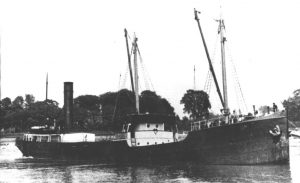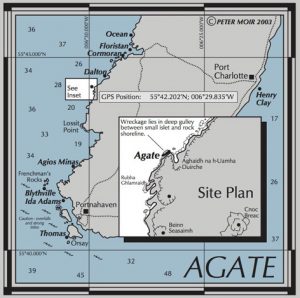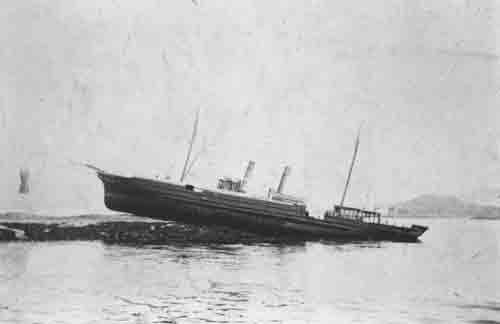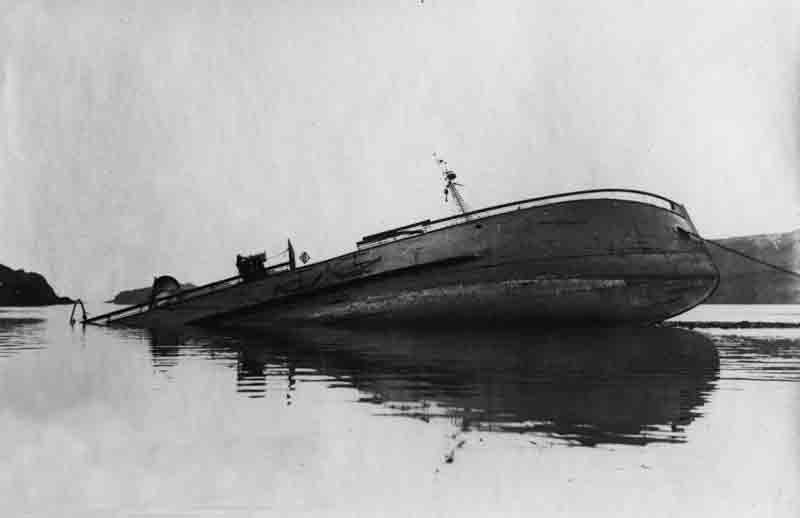The Agate was a rear engined coastal steamship built by Scott & Sons, Bowling (Yard No 261) and launched on 22nd February 1917. She measured 199.4′ x 30.1′ x 11.9′, and her tonnage was 824 gross tons, 397 net tons. She was powered by a triple expansion steam engine by Ross and Duncan Ltd., Glasgow delivering 139 nominal horse power. She was ordered by William Robertson, a shipowner based in Glasgow and operated for his shipping company until her loss in 1940.
She was en route (in convoy) from Goole to Belfast with a cargo of coal when she ran aground in thick fog at Cairns Point near Tormisdale on the west coast of Islay. The stranding took place at 4:30am on 30th December, 1940 and Captain Humphries and his crew were taken off by the Islay lifeboat. The following day the ship broke her back and became a total wreck. By the 4th of January she had broken up and was completely submerged. Lloyd’s agent reported her sunk in 10 fathoms.
The remains of the Agate lie just north of the point at Rubha Ghlamraidh on the west coast of Islay in position 55°44.202’N 006°29.835’W. At the site there is a prominent ‘sharks fin rock’ approximately 20 metres off the rocky coastline with a deep gully on the landward side. The remains of the Agate lie in the gully. Depths in the gully range from 15 to 5 metres at the east end close to shore. The site is over shadowed by the prominent headland directly inshore. As area is very exposed to heavy swell from the west, unless the sea state is virtually flat calm, a visit to this site is not recommended.
The wreckage is located in the base of the gully and consists of a four bladed spare propeller, engine parts, prop shaft with a few blades adjacent with miscellaneous ferrous and non-ferrous debris either loose or fused into the seabed. The remains are testament to the power of the sea, with the prop shaft and engine components bent and distorted by the constant movement of the sea. The site also provides an interesting dive along the steep sided gully, encrusted with colourful sea life.

































